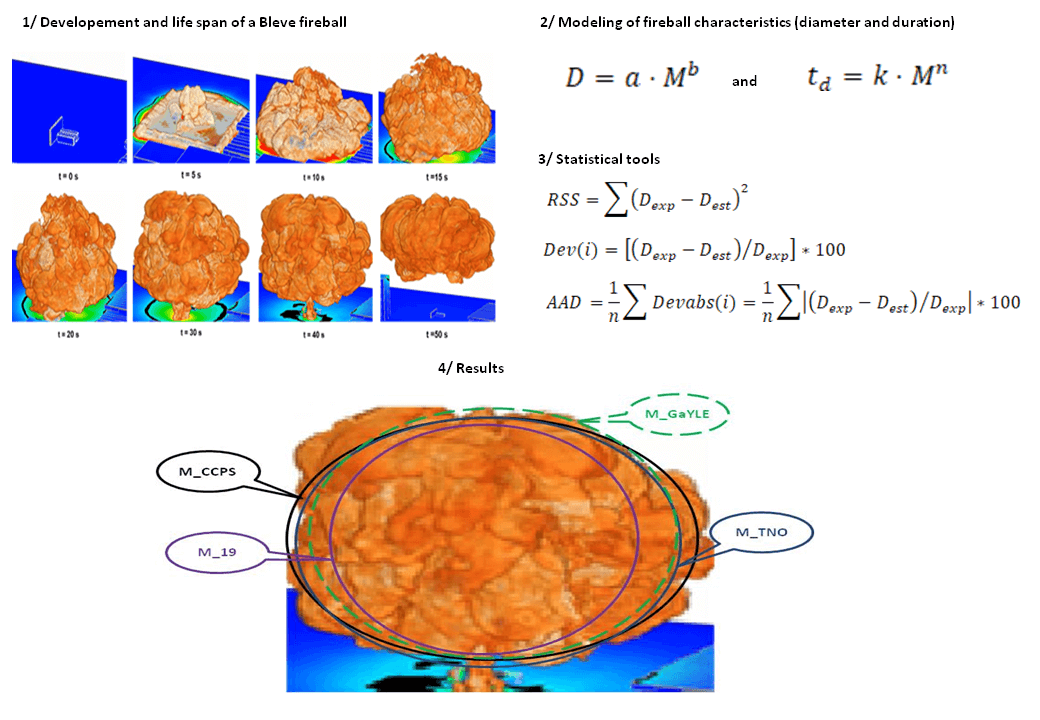 Open Access
Open Access
REVIEW
Use of Statistical Tools for Comparison between Different Analytical and Semi-Empirical Models of the Bleve Fireball
1 Materials, Energy, Acoustics Team (MEAT), High School of Technology-Salé, Mohammed V University in Rabat,
Rabat, 10051, Morocco
2 Forensic Institute of the Royal Gendarmerie, Rabat, Morocco
3 Department of Mathematics, Faculty of Sciences, Ibn Tofail University, Kenitra City, Morocco
* Corresponding Authors: Abderraouf Guelzim. Email: ; Anas Mbarki. Email:
,
Frontiers in Heat and Mass Transfer 2023, 21, 125-140. https://doi.org/10.32604/fhmt.2023.041832
Received 08 May 2023; Accepted 12 July 2023; Issue published 30 November 2023
Abstract
The Bleve is an explosion involving both the rapid vaporization of liquid and the rapid expansion of vapor in a vessel. The loss of containment results in a large fireball if the stored chemical is flammable. In order to predict the damage generated by a Bleve, several authors propose analytical or semi-empirical correlations, which consist in predicting the diameter and the lifetime of the fireballs according to the quantity of fuel. These models are based on previous experience, which makes their validity arbitrary in relation to the initial conditions and the nature of the product concerned. The article delves into uncertainty analysis associated with analytical and semi-empirical models of the BLEVE fireball. It could explore how uncertainties in input data, and the choice of a more or less inappropriate model, propagate into the model results. Statistical techniques such as global sensitivity analysis or uncertainty analysis are employed to quantify these uncertainties. In this paper, an attempt is made to evaluate and select reasonable models available in the literature for characterizing fireballs and their consequences. Correlations were analyzed using statistical methods and BLEVE data (experimental and estimated data by correlation) to determine the residual sum of squares (RSS) and average absolute deviation (AAD). Analysis revealed that the Center for Chemical Process Safety (CCPS), the TNO (Netherlands Organization for Applied Scientific Research), and the Gayle model revealed a high degree of satisfaction between the experimental and estimated data through correlation.Graphic Abstract

Keywords
Cite This Article
 Copyright © 2023 The Author(s). Published by Tech Science Press.
Copyright © 2023 The Author(s). Published by Tech Science Press.This work is licensed under a Creative Commons Attribution 4.0 International License , which permits unrestricted use, distribution, and reproduction in any medium, provided the original work is properly cited.


 Submit a Paper
Submit a Paper Propose a Special lssue
Propose a Special lssue View Full Text
View Full Text Download PDF
Download PDF Downloads
Downloads
 Citation Tools
Citation Tools